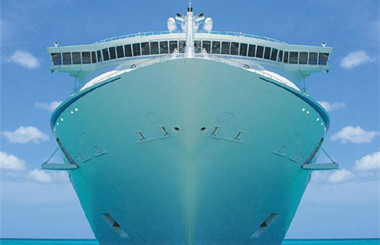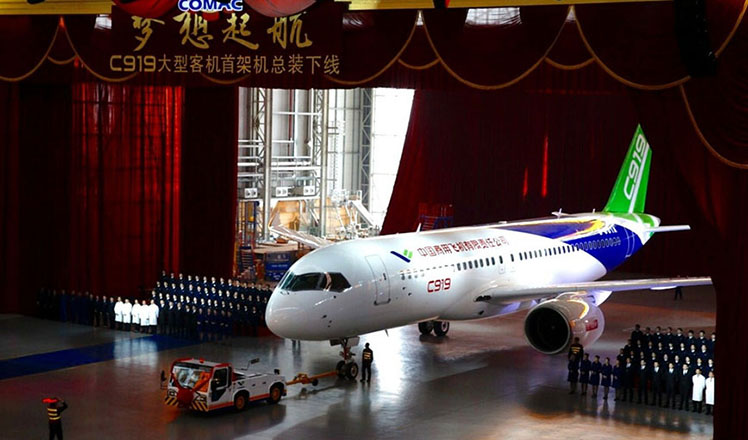Full Text: China Adheres to the Position of Settling Through Negotiation the Relevant Disputes Between China and the Philippines in the South China Sea
Updated: 2016-07-13 15:06
(Xinhua)
|
|||||||||
57. The Philippines' territory so defined has nothing to do with China's Nanhai Zhudao.
58. In the 1950s, the Philippines attempted to take moves on China's Nansha Qundao but eventually stopped because of China's firm opposition. In May 1956, Tomás Cloma, a Filipino, organized a private expedition to some islands and reefs of Nansha Qundao and unlawfully named them "Freedomland". Afterwards, Philippine Vice President and Foreign Minister Carlos Garcia expressed support for Cloma's activities. In response, the spokesperson of the Chinese Foreign Ministry issued a stern statement on 29 May, pointing out that Nansha Qundao "has always been a part of China's territory. The People's Republic of China has indisputable sovereignty over these islands [...] and will never tolerate the infringement of its sovereignty by any country with any means and under any excuse." At the same time, China's Taiwan authorities sent troops to patrol Nansha Qundao and resumed stationing troops on Taiping Dao. Afterward, the Philippine Department of Foreign Affairs said that the government of the Philippines did not know about Cloma's activities or give him the consent before he took his moves.
59. Starting in the 1970s, the Philippines invaded and illegally occupied by force some islands and reefs of China's Nansha Qundao and raised illegal territorial claims. The Philippines invaded and illegally occupied Mahuan Dao and Feixin Dao in August and September 1970, Nanyao Dao and Zhongye Dao in April 1971, Xiyue Dao and Beizi Dao in July 1971, Shuanghuang Shazhou in March 1978 and Siling Jiao in July 1980. In June 1978, Philippine President Ferdinand Marcos signed Presidential Decree No. 1596, which designated some islands and reefs of China's Nansha Qundao and large areas of their surrounding waters as "Kalayaan Island Group" ("Kalayaan" in Tagalog means "Freedom"), set up "Municipality of Kalayaan" and illegally included them in the Philippine territory.
60. The Philippines has also enacted a series of national laws to lay its own claims of territorial sea, exclusive economic zone and continental shelf, part of which conflicted with China's maritime rights and interests in the South China Sea.
61. The Philippines has concocted many excuses to cover up its invasion and illegal occupation of some islands and reefs of China's Nansha Qundao in order to pursue its territorial pretensions. For instance, it claims that: "Kalayaan Island Group" is not part of Nansha Qundao but terra nullius; Nansha Qundao became "trust territory" after the end of the Second World War; the Philippines has occupied Nansha Qundao because of "contiguity or proximity" and out of "national security" considerations; "some islands and reefs of Nansha Qundao are located in the exclusive economic zone and continental shelf of the Philippines"; the Philippines' "effective control" over the relevant islands and reefs has become the "status quo" that cannot be changed.
ii. The Philippines' illegal claim has no historical or legal basis
62. The Philippines' territorial claim over part of Nansha Qundao is groundless from the perspectives of either history or international law.
63. First, Nansha Qundao has never been part of the Philippine territory. The territorial scope of the Philippines has already been defined by a series of international treaties. The United States, administrator of the Philippines at the relevant time, was clearly aware of these facts. On 12 August 1933, ex-Senator Isabelo de los Reyes of the United States-governed Philippines wrote a letter to Governor-General Frank Murphy in an attempt to claim that some Nansha islands formed part of the Philippine Archipelago on the ground of geographical proximity. That letter was referred to the Department of War and the Department of State. On 9 October, the United States Secretary of State replied that, "These islands [...] lie at a considerable distance outside the limits of the Philippine Islands which were acquired from Spain in 1898". In May 1935, the United States Secretary of War George Dern wrote a letter to Secretary of State Cordell Hull, seeking the views of the State Department on the "validity and propriety" of the Philippines' territorial claims over some islands of Nansha Qundao. A memorandum of the Office of Historical Adviser in the State Department, signed by S.W. Boggs, pointed out that, "There is, of course, no basis for a claim on the part of the United States, as islands constituting part of the Philippine Archipelago". On 20 August, Secretary Hull officially replied in writing to Secretary Dern, stating that, "the islands of the Philippine group which the United States acquired from Spain by the treaty of 1898, were only those within the limits described in Article III", and that, referring to the relevant Nansha islands, "It may be observed that [...] no mention has been found of Spain having exercised sovereignty over, or having laid claim to, any of these islands". All these documents prove that the Philippines' territory never includes any part of Nanhai Zhudao, a fact that has been recognized by the international community, including the United States.
64. Second, the claim that "Kalayaan Island Group" is "terra nullius" discovered by the Philippines is groundless. The Philippines claims that its nationals "discovered" the islands in 1956, and uses this as an excuse to single out some islands and reefs of China's Nansha Qundao and name them "Kalayaan Island Group". This is an attempt to create confusion over geographical names and concepts, and dismember China's Nansha Qundao. As a matter of fact, the geographical scope of Nansha Qundao is clear, and the so-called "Kalayaan Island Group" is part of China's Nansha Qundao. Nansha Qundao has long been an integral part of China's territory and is by no means "terra nullius".
65. Third, Nansha Qundao is not "trust territory" either. The Philippines claims that after the Second World War, Nansha Qundao became "trust territory", the sovereignty over which was undetermined. This claim finds no support in law or reality. The post-War trust territories were all specifically listed in relevant international treaties or the documents of the United Nations Trusteeship Council. Nansha Qundao was never included in them and was thus not trust territory at all.
Related Stories
Chinese defense minister rejects South China Sea arbitration award 2016-07-13 14:09
Serbia supports peaceful resolution of South China Sea dispute 2016-07-13 14:08
Czech expert warns US and the Philippines not to play fire in South China Sea 2016-07-13 13:49
Overseas Chinese urged to support sovereignty for South China Sea 2016-07-13 11:19
Net users angry at tribunal's ruling over South China Sea 2016-07-13 11:14
Wider support for China's South China Sea stance 2016-07-13 10:25
Today's Top News
Ruling inherently biased and unjust 'piece of paper'
Tribunal issues ill-founded award on South China Sea
Theresa May set to be UK's next PM after rival quits
Chinese participation at UK air show biggest ever
2 gored in bull run; bullfighter killed
G20 economies to improve global trade governance
Suspect in Dallas attack wanted to 'kill white people'
5 Dallas police killed at protest against police shooting
Hot Topics
Lunar probe , China growth forecasts, Emission rules get tougher, China seen through 'colored lens', International board,
Editor's Picks

|

|

|

|

|

|







